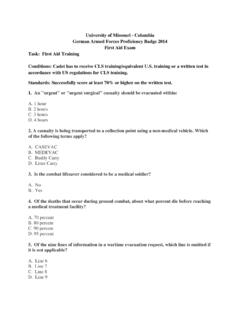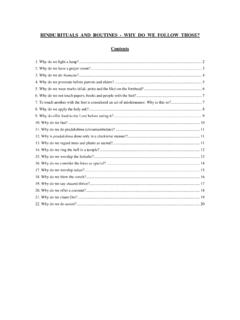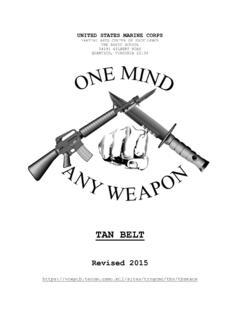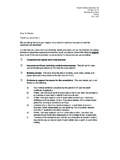Transcription of WARRIOR TRAINING CENTER AIR ASSAULT SCHOOL
1 WARRIOR TRAINING CENTER . AIR ASSAULT SCHOOL . HANDBOOK. WHEN THE WILL IS STRONG, EVERYTHING IS EASY . FY2013. 2. TABLE OF CONTENTS. CHAPTER 1. AIR ASSAULT OPERATIONS. PART I. THE HISTORY OF AIR ASSAULT ..7. PART II. INTRODUCTION TO ROATARY WING AIRCRAFT ..15. PART III. AIR CRAFT SAFETY 35. PART IV. AEROMEDICAL EVACUATION PROCEDURES 37. PART V. PATHFINDER OPERATIONS .43. PART VI. HAND AND ARM SIGNALS .55. PART VII. COMBAT ASSAULT ..64. AIR MISSION BRIEF ..57. COLD LOAD TRAINING ..58. PART VIII. CLOSE COMBAT ATTACK ..62. 3. CHAPTER 2. HELICOPTER EXTERNAL LOAD OPERATIONS. PART I. GENERAL .67. PART II. 5,000 AND 10,000 POUND CAPACITY CARGO NET ..90. A-22 CARGO BAG ..95. ONE TO FOUR 500 GALLON FUEL DRUMS ..101. M102 105mm HOWITZER ..109. M119A2 105mm HOWITZER ..114. M149-SERIES WATER TRAILER (Unique) ..120. M998/M1038 TRUCK, CARGO, 1 TON (HMMWV).
2 124. M1097/M1097 A2 TRUCK, CARGO, 1 TON (HMMWV) ..130. SIDE BY SIDE RIGGING PROCEDURES FOR ..138. M998/1038 CARGO TROOP (HMMWV), (SHOTGUN) M996/M1036/M1045/. M1078/M1078A1/M1079A1/M1081 LMTV 146. CHAPTER 3. RAPPELLING. PART I. BASIC COMBAT RAPPELLING 154. 4. APPENDIX. APPENDIX A. NINE LINE MEDEVAC REQUEST ..167. APPENDIX B. AIR MISSION BRIEF .172. APPENDIX C. EXAMPLE AIR MOVEMENT TABLE ..175. APPENDIX D. AIR LOAD TABLE (EXAMPLE)..176. APPENDIX E. CLOSE COMBAT ATTACK ..177. APPENDIX F. SLINGLOAD INSPECTION SEQUENCE ..179. APPENDIX G. SLING CONVERSION TABLE .189. APPENDIX H. SLINGLOAD INSPECTION RECORD INSTRUCTIONS ..192. DA FORM 7382-R SLINGLOAD INSPECTION RECORD ..193. APPENDIX I. DA FORM 5752-R ROPE USAGE APPENDIX J. Equipment Inspection (Layout)..195. 5. CHAPTER 1. AIR ASSAULT OPERATIONS. REFERENCES: ATTP , Air ASSAULT Operations, March 2011.
3 FM , Pathfinder Operations, 25 April 2006. FM , Medical Evacuation, 8 May 2007. (w/ change 1, July 2009). TM 1-1520-248-10, Army Model OH-58D Helicopter, 2 July 2007. (w/ change 4, dated 15 March 2010). TM 1-1520-237-10, Army Model UH-60A/L Helicopter, 25 September 2009. (w/ change 1, dated 11 June 2010). TM 1-1520-238-10-1, Army Model AH-64D Helicopter, Block I dated 30. June 2010. TM 1-1520-251-10-2, Army Model AH-64D Helicopter, Block II dated 30. June 2010. TM 1-1520-240-10, Army Model CH-47D Helicopter, 22 February 2011. ITM 1-1520-252-10, Army Model MH-47E Helicopter, 28 June 1995. (w/ changes 22, dated 31 October 2008). FM , Aviation Brigades, 7 December 2007. FM , Attack Reconnaissance Helicopter Operations, 16 Febru- ary 2007. FM , Utility and Cargo Helicopter Operations, 7 December 2007. FM , Infantry Rifle Platoon and Squad, 28 March 2007.
4 FM 7-92, Infantry Reconnaissance Platoon and Squad (Airborne, Air ASSAULT , Light Infantry), 23 December 1992. 6. PART I. HISTORY OF AIR ASSAULT . Air ASSAULT is a combat insertion unit using helicopters to transport and insert soldiers into battle, provide medical evacuation, provide close air support, provide resupply operations. It is usually a company or bat- talion sized element. The term Air ASSAULT derives from two types of operations known as Air Mobility and Vertical Envelopment. Air Mobility Operations were de- veloped by the German Army during WWII in the 1930 s. The US Army soon adopted this method of offensive operations in 1941 using wooden gliders. The glider was assisted into the air by being towed by a larger aircraft and then released. The pilot had to navigate the large glider loaded with a team of infantry soldiers to the landing zone behind enemy lines, at night and attempt to land safely.
5 Once the pilot landed the glider, he would join the mission as another infantry soldier with the team that he flew in. Although the gliders and techniques used were advanced for that time period they did pose some disadvantages. Once the aircraft was landed safely that team of soldiers were cut off from allied troops. Pilots had to be cross trained with infantry tactics so he could operate as both roles. The air mobility glider was abandoned after WWII after the invention of the helicopter. WWII Wooden Air Mobility Glider 7. Vertical Envelopment is a tactical maneuver in which troops are air dropped or landed to attack an enemy s rear, flanks, or to cut off the en- emy s ability to resupply or withdraw. Vertical Envelopment was devel- oped in 1946 after US Marine Corps Lieutenant General Roy S Geiger witnessed atom bomb testing.
6 Small nuclear weapons posed as a great threat to amphibious frontal attacks and landings by the US Marine Corp in which they were famous for. A small nuclear weapon had the ability to destroy most of , if not all of the main attack force since they were typi- cally centralized to one beachhead. To address this issue the a special board called the Hogaboom Board was convened at order of the Com- mandant of the Marine Corps Alex Vandergrift. After deliberations the board recommends the use of helicopters and develops special require- ments named Vertical Envelopment. The helicopter squadron HMX-1 is commissioned 1 December 1947 to support this new type of operation. The Helicopter assigned to this unit is the Sikorsky HO3S-1. Sikorsky HO3S-1. The first Vertical Envelopment mission was performed by the Marine Transport Helicopter Squadron HMR-161 during Operation Summit, Ko- rea on 20 September 1951.
7 The operation s objective was to secure Hill 884. There were a total of 224 combat equipped troops and 17,772 lbs of cargo inserted for the mission which took a total of 65 lifts to complete. The helicopter used was the HRS-1. 8. Sikorsky HRS-1. With the successful vertical envelopment missions in Korea, these tech- niques were immediately put into use during the Vietnam Conflict on 15. April 1962 using Marine Corps helicopters to insert friendly Vietnamese forces in Operation Shufly. After many successful missions North Vietnam- ese troops began to develop techniques to take down the Marine helicop- ters. The Army began to support these efforts using their UH-1A armed attack helicopters. The North Vietnamese troops began to develop even further. In response to the Enemy s new methods and the success of Vertical Envelopment, the US Army, began developing their own template for Air Mobile operational techniques and formed their first experimental unit on 7.
8 January 1963. This new unit was activated at Ft Benning, Georgia on 15. February 1963. It was named the 11th Air ASSAULT Division. The 11th Air ASSAULT Division consisted of one infantry battalion and was supported by the 10th Air Transport Brigade. After two years of TRAINING and develop- ment, the 11th Air ASSAULT Division was officially activated as a full fledged fighting force structure on 1 July 1965 with orders to Vietnam. They were renamed the 1st Calvary Division (Air Mobile) commanded by Major Gen- eral Harry Kinnard. The 1st Cavalry was faced with a few challenges just prior to their deployment. After news of their deployment fifty percent of their unit was un-deployable. Replacements for these soldiers had to be TRAINING in ninety days. The 1st Cavalry was also issued the first M16 Rifles only ten days before leaving.
9 9. The 1st Cavalry arrive in Vietnam on 25 August 1965. They immediately had to clear a golf course to be used as the worlds largest helipad. During preparations, they would loose one thousand more soldiers to a peculiar strain of malaria. The first unit to see action against NVA forces was the 1st Squadron, 7th Cavalry Regiment, led by Lieutenant Colonel Harold G Moore. This would be the first large unit engagement of the Vietnam War. It took place near the Chu Pong Massif close to the Vietnam-Cambodian Border. It is known as The Battle of Ia Drang Valley. The battle at LZ X-Ray lasted three days. NVA casualties were reported to be 834 counted and 1215. estimated dead and 6 captured and forced the NVA withdraw from LZ X- Ray. American casualties were calculated to be 79 dead and 125. wounded. Air Cavalry Soldiers during the Battle of Ia Drang Valley 10.
10 Air Mobile Operations proved to be invaluable on the modern battlefield. During the Vietnam War the 101st Airborne Division was transformed in an Air Mobile Division. After returning to Ft Campbell, Kentucky, they wound soon establish the first official Air ASSAULT SCHOOL . The first class began on 26 March 1974. The classes were intended for only 10st soldiers. Air As- sault qualifications quickly became known as a much needed skill set so the Army opened the SCHOOL to all soldiers and authorized the order of the Air ASSAULT badge. The Air ASSAULT Badge During the days of the 11th Air ASSAULT Division TRAINING , General Kin- nard wanted his men to have a sense of pride in being one his nicknamed, Sky Soldiers, so the Air Mobility Badge was made. The Badge was origi- nally made from excess tooth fillings and formed for wear.











